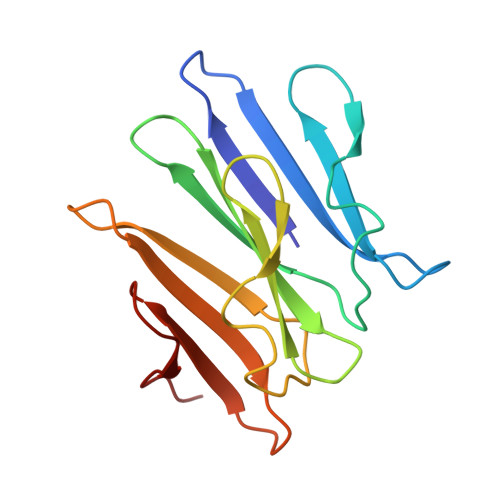Architecture and Evolution of Blade Assembly in beta-propeller Lectins.
Bonnardel, F., Kumar, A., Wimmerova, M., Lahmann, M., Perez, S., Varrot, A., Lisacek, F., Imberty, A.(2019) Structure 27: 764-775.e3
- PubMed: 30853410
- DOI: https://doi.org/10.1016/j.str.2019.02.002
- Primary Citation of Related Structures:
6HTN - PubMed Abstract:
Lectins with a β-propeller fold bind glycans on the cell surface through multivalent binding sites and appropriate directionality. These proteins are formed by repeats of short domains, raising questions about evolutionary duplication. However, these repeats are difficult to detect in translated genomes and seldom correctly annotated in sequence databases. To address these issues, we defined the blade signature of the five types of β-propellers using 3D-structural data. With these templates, we predicted 3,887 β-propeller lectins in 1,889 species and organized this information in a searchable online database. The data reveal a widespread distribution of β-propeller lectins across species. Prediction also emphasizes multiple architectures and led to the discovery of a β-propeller assembly scenario. This was confirmed by producing and characterizing a predicted protein coded in the genome of Kordia zhangzhouensis. The crystal structure uncovers an intermediate in the evolution of β-propeller assembly and demonstrates the power of our tools.
Organizational Affiliation:
University of Grenoble Alpes, CNRS, CERMAV, 38000 Grenoble, France; Swiss Institute of Bioinformatics, 1227 Geneva, Switzerland; Computer Science Department, UniGe, 1227 Geneva, Switzerland.


















